
Building a sales forecast is both an art and a science. Accurate sales forecasts keep leadership happy, your business healthy, and your sales team engaged.
Because sales is the lifeline of any company structure, having a general understanding of what to expect in the future will help in making informed, intentional sales decisions.
In this guide, we’ll review what sales forecasting is, how your company can accurately forecast sales, and break down helpful sales forecasting tools to get you started.
8 Sales Forecasting Software and Tools
- Zoho
- Outreach
- Jirav
- Whatfix
- Salesforce
- Hubspot
- InsightSqaure
- Pipedrive
What Is a Sales Forecast?
The goal of sales forecasting is to accurately anticipate your sales performance. Sales professionals aim to either hit their expected target or, ideally, exceed it.
Sales forecasts help businesses make better decisions based on future revenue, which will help them to:
- Forecast likely profit (or loss) in a designated period
- Organize staffing levels and create HR plans
- Plan the required level of production needed to meet demand
- Gives sales leaders the right prospect and industry insights
- Helps sellers take the necessary steps toward continuous growth
Sales forecasts often use historical data, industry trends, and the status of the current sales pipeline as benchmarks to estimate weekly, monthly, quarterly, and annual sales totals.
Similarly to a weather forecast, your sales team should use your forecast as a baseline to work from, not view it as a set-in-stone certainty or goal. Sales forecasting is not to be confused with sales goal-setting. An enterprise sales goal outlines what you want to happen, while a sales forecast roughly estimates what might happen based on previous evidence or data – regardless of your goal.
Bottom-Up vs Top-Down Sales Forecasting
There are two common ways to forecast sales: bottom-up forecasting and top-down forecasting.
- Bottom-up forecasting gauges a company’s future performance by assessing low-level data and working up to revenue.
- Top-down forecasting, on the other hand, gauges future performance by analyzing high-level data and working down to revenue.
Each approach has its own advantages and use cases depending on your business. Discuss both with your company leaders and determine which method is best for your sales team.
Why is Sales Forecasting Important?
Sale forecasting is an essential part of sales operations for any business. Without even a general idea of what your future sales might look like, you can’t allocate resources, hire new staff, increase quotas, or manage costs. The goal of sales forecasting is to provide information that you can use to make intentional, impactful business decisions.
When sales forecasts are accurate, internal friction over all the things that revenue funds melts away. Trade-offs and compromises no longer need to be made about things such as cutting the workforce, reducing support, or delaying product development. Instead, business moves along seamlessly.
Sales forecasts allow sales leaders to identify potential issues while there’s still time to avoid or confront them. If, for example, you notice your team is trending below quota, you can figure out what’s going on and address it in real-time. Addressing these problems in the present instead of down the road will have a significant impact on how they’re handled and how your team responds.
7 Benefits of Sales Forecasting
Sales forecasting is not only about predicting your sales numbers – it’s about having the necessary information that enables sales leaders to make the right decisions today that will help your business succeed tomorrow.
Here are seven benefits of putting together a sales forecast:
1. Make strategic decisions
Sales forecasts help make informed decisions about everything from staffing and inventory to new product lines and potential marketing efforts.
Sales forecasting allows sales managers and reps to spot potential issues and gives you time to avoid or alleviate them. For instance, if you notice that your sales team is not hitting their quarterly targets, you’ll want to identify the cause and make the necessary adjustments to your strategy and approach in order to bring in more leads.
Another example – if your sales forecast predicts numbers that are lower than what you hoped, you might want to explore new revenue streams or reevaluate your pricing model.
2. Set better goals
Sales forecasting is a valuable tool for sales managers and leaders to set realistic goals. Sales forecasts form the basis of your entire strategy throughout the year, and the insights lay the groundwork not just for the company’s vision, but also for the direction of your sales team.
If you want to grow your business, sales managers need to set sales targets for sales teams or individual salespeople. If you aren’t using sales forecasting to inform your sales targets, you run the risk of setting unrealistic goals.
3. More accurate budgeting
The role of the sales forecast with respect to business finances is clear: sales forecasting empowers businesses to estimate their costs and revenue more accurately.
Forecasting matters to your financial team because it allows them to establish profit plans and plan for income flows. They also need it to make cases for additional resources or materials for production teams in the longer term.
4. Better prospecting
When using a CRM software to forecast, you can quickly determine how much prospecting you need to do to keep the pipeline in good shape. Better prospecting means reducing time wasted on ill-fitting candidates or consumers whose needs don’t align with your product or service.

5. Better hiring
Sales forecasts also help with hiring decisions. For example, if your sales forecast predicts an increase in demand, companies need to allocate a proper budget and shift efforts toward hiring and obtaining resources to meet that demand. And on the other hand, if it is predicted that there will be a decline in sales, it may be time to pause hiring plans and shift your focus to bringing in more business.
6. Resource planning
Many companies use sales forecasts to allocate resources across different functional departments and teams.
Production uses sales forecasts to develop production schedules and quantity requirements, and to regulate inventories; finance uses them to set operating budgets and project cash flows; HR uses them to establish hiring levels, and marketing uses them to allocate resources across different marketing activities.
7. Smooth external operations
Every company wants to support and satisfy its customers and investors. When forecasts are met and internal operations are operating as they should be, your company can continue funding external marketing events, staffing ample customer service touchpoints, supporting current customers, and more.
7 Steps of the Sales Forecasting Process
Sales forecasting is a muscle that you need to continuously work at to strengthen, not a one-off item to check off your to-do list. While sales managers should design a framework for their sales forecasting plan each year, you should also change up your strategies from time to time so new muscles develop.
Establish a sales forecasting plan with your sales team by focusing on the following:
1. Determine your sales process
If your sales team isn’t consistently using the same stages and steps, you won’t be able to predict the likelihood of an opportunity closing. Your sales process will set standard opportunity, lead, prospect, and close definitions. Everyone needs to agree on the process as well as when and how to nurture leads throughout the cycle.
2. Set goals
While your sales forecast may be different from your goals, you won’t know if your forecast is working if you don’t set a target first. Each sales rep needs individual goals, as does your entire sales team.
To gauge performance and set appropriate goals, start with an objective definition of success and then work with your sales reps to determine sales quotas. These will serve as baseline goals to reference and compare alongside your sales forecasting.
3. Gather data
While understanding past sales data is critical for creating a viable sales forecast, other departments within your company can also provide valuable insight. Consider including the following teams in your forecasting process:
- Marketing: Your marketing organization has a direct correlation to the quality of your pipeline. Sit down with your marketing team to understand their plans and strategies for the time period you’re forecasting.
- Product: Is your product team working on anything new for the coming year? How do product launches factor into your overall forecast? Including this data in your analysis can help you create a more well-rounded strategy.
- Finance: Your finance team should be running an analysis to better understand the financial health of your company as a whole. Work with financial analysts to understand how your sales forecast aligns with the financial goals of the company.
- HR: Will your future sales goals require additional headcount or employee resources? If so, connect with a business partner from your HR department to map out what that process will look like, and how it impacts your forecast.
4. Invest in a CRM
Rather than attempt to recalculate your forecast based on estimates or speculation, your best bet is to rely on a CRM solution to get an accurate view of deal status and pipeline in real-time.
During a crisis, reps need to feed their CRM with data as events unfold so leaders have clear visibility into the rapidly evolving pipeline. That data enables leaders to support their sales reps with corporate-level decisions about where they should be focusing their time – and craft the new forecasts. Your sales forecast is only as good as the data coming into it from your sales teams.
Simply purchasing a CRM won’t make your forecasting better. In fact, without proper CRM training and sales onboarding, it could make it worse. Be sure to have a proper strategy to help train your sales reps on your new solution, as well as provide on-demand support to help drive your CRM adoption across your sales team.
With digital adoption and performance support tools such as Whatfix, sales leaders are empowered to create in-app CRM content to guide and provide support sales reps in the form of interactive walkthroughs, step-by-step tutorials, task lists, smart tips, and embedded knowledge bases.



Whatfix overlays on top of all common CRMs including Salesforce, MS Dynamics, etc. – allowing reps to learn in the flow of work, in the moment of need. This provides a better path to cleaner CRM data, as well as more productive sales reps, leading to better sales forecasting and closing more deals.
5. Review previous forecasts
If you’ve previously forecasted your sales, using those is a great starting point. Compare the actual data you have available to the prior year’s forecast and take note of any variances or discrepancies. Some questions to consider include:
- How did your team perform this year?
- What key areas did you underdeliver?
- Were the goals set the prior year unrealistic?
- Did you factor in major events and seasonality?
Highlight any major takeaways or lessons learned that your company’s leadership should be aware of as you navigate the sales forecasting process. This will help provide a forecast benchmark for your upcoming sales cycle.
6. Hold your team accountable
Regardless of which sales forecasting method you choose, keep your sales reps informed and communicate changes and decisions often. Train your sales team on best practices and how to achieve their goals, and hold them accountable for their performance.
Gather regular feedback from your team about what’s working and what’s not, updates on how you’re performing against your forecast, and areas of opportunity or adjustment. After all, your sales reps are the closest to and most familiar with your prospects and overall sales performance as a company.
7. Choose the right forecasting method
Once you have your sales process, goals, and CRM in place, you can choose a sales forecasting method – bottom-up or top-down. The method you choose will depend on a few factors, including:
- Age of your business
- Size of your sales team
- Quality of your sales data
- Quality of your data tracking habits
The trick is to put in place an approach that’s sophisticated enough to be meaningful without being too complex to manage and maintain. Many businesses use two or more sales forecasting techniques together to create a range of forecasts. That way, they have a plan and are prepared for every scenario.
Who Is Responsible for Forecasting Sales?
Each business has its own sales forecast owners. These are some of the common teams and stakeholders who are usually responsible:
1. Product leaders
Product leaders define what products will be available to sell and when. They have their finger on the pulse of the product team and can provide insight into current and future performance of the product.
2. Sales leaders
Sales leaders predict the numbers that their teams will deliver. Depending on the seniority of the leader, how they forecast varies. For example, first-line managers use collections of opportunities to forecast, while third-line managers likely consider a wide range of numbers and traditional close rates to come up with an overall forecast.
3. Sales reps
Sales reps report their own numbers to their managers, who then compare those numbers against current forecasts and use them to establish future ones. Their insight is arguably the most impactful.
5 Elements of Effective Sales Forecasting
To build an effective sales forecast, sales reps need to be able to answer five questions: who, what, where, why, and how.
1. Who
Sales managers and leaders make their forecasts based on who their prospects are. Depending on if their prospects are the decision-makers or influencers, the forecast will be more or less exact.
2. What
Sales forecasts should be based on what solutions you plan to sell. In turn, that should be based on problems your prospects have voiced, which your business can provide a solution for.
3. Where
Sales teams see better forecasting accuracy when they get closer to the center of the action, so determine where the buying decision is made, and where the actual products will be used.
4. Why
Consider why a prospect or existing customer is considering competitor products or services. Is there a compelling event or gap in your solution that is making them consider it now? Without a clear answer, a deal may delay or a client may back out.
5. How
How does your target buyer tend to make purchasing decisions? If you’re not accounting for how they do it now and how they’ve done it in the past in your forecast, it may be a gray area.
9 Common Sales Forecasting Challenges
As helpful as they are, there are many hurdles to jump over in regards to sales forecasting – from messy historical data to subjective seller biases getting in the way of an accurate prediction of how any given lead might behave in the future.
Here are the top nine sales forecasting challenges to expect so you can navigate them more effectively:
1. Unpredictable markets
Unpredictable events have a daunting impact on your sales forecast. Extreme weather, economic crises, civil unrest, global pandemics (cough cough, COVID-19) – all dramatically change your sales forecast depending on your business, location, and customer base. What you thought you knew about expected revenue growth can be suddenly flipped on its head.
2. Overestimating forecast
It’s not uncommon for sales reps to overestimate sales forecasts. They work in a highly competitive field where their wins are broadcasted on the leaderboard and their failures are heavy and visible. That pressure may make it difficult for even the best reps to accurately predict their future performance, attempting to remain optimistic and ambitious.
3. New or departing personnel
When salespeople leave your company – either because they found another opportunity or were terminated– your forecast may be off unless you happen to have a pipeline of potential hires to fill those shoes and continue to nurture sales.
Similarly, if a significant number of reps are hired at once, your might see a big jump in business once they’re fully ramped – a jump that was not otherwise anticipated or expected.
4. Competitive changes
Unsurprisingly, what your competitors are doing can impact your forecasts. If another company in the space reduces its prices, your reps may need to discount more aggressively or risk losing customers. On the other hand, if a competitor goes out of business, you’ll probably see increased demand.
5. Product updates and rebranding
Are you rolling out a highly-requested feature, introducing a new pricing model, or offering a complementary product or service? These updates to your product or changes to your service can impact sales performance and skew your forecast.
6. Seasonality
Depending on your industry, location, and target buyers, consumers might be more or less likely to buy at certain times of the year.
School districts, for example, typically assess new purchases in spring and decide what to buy in fall. Car shoppers use national holiday specials as an excuse to buy a new car at a discounted price, so dealers need to be mindful of their inventory at certain times of the year. In general, the holidays (Thanksgiving through early January) are typically down for B2B companies.
Be mindful of how seasonality impacts buyer behavior.
7. Not enough historical data
It’s much easier to come up with a sales forecast if you have historical data to work with. Unfortunately for newly established companies, not having a substantial amount of historical data means they’re forced to depend on market research and competitive intelligence to base their forecasts.
8. Not having enough forecasts
It is a good idea to create multiple sales forecasts using a range of predictions, especially for newer businesses. After creating an initial forecast using your best estimates, create another forecast based on optimistic numbers and another based on pessimistic ones. Update your forecast with the actual values as time progresses.
9. Time-consuming, manual processes
Sales forecasting takes time. It’s estimated that sales reps spend 2.5 hours per week on forecasting, while sales managers spend an average of 1.5 hours. Every hour that’s devoted to these time-consuming – and manual – activities would be better spent on actual sales.
Accurate sales forecasting seems difficult, but it doesn’t have to be. Keep these things in mind, expect the unexpected, and remember that a forecast is more of a guided suggestion, not to be taken as fact.
5 Features of Effective Sales Forecasting Software and Tools
To be considered a solid tool, sales forecasting software should offer the following:
1. Track performance and pipeline activity
It’s essential that sales managers can view pipeline activity to see how leads are progressing. They can also use sales forecasting software to identify potential bottlenecks or dips in performance that need to be addressed.
2. Track revenue and generate revenue projections
Sales teams need to be able to generate revenue projections for a given period. Effective sales forecasting software should be able to combine current sales prices with historical data to align revenue projections with demand forecasts.
3. Input data
Sales forecasting software is only as effective as the data that it’s given to work with. It’s not enough to simply have a place to gather your data– it needs to be easy to access, input, and edit your numbers as needed.
4. Manage goals
Effective sales forecasting tools should be able to import your team-wide and individual sales data from your accounting tools so sales managers and leaders can track progress against your sales forecast.
5. Generate reports
Most sales forecasting software can create various reports, including final forecast reports, projected revenue reports, and forecast accuracy reports. These reports come in handy when making a case for additional hires or resources for your internal teams.
8 Sales Forecasting Software and Tools
Sales forecasting tools enable companies to anticipate future growth trends and help leadership formulate effective strategies to expand their business. With the right tools, your sales team can see exponential growth and break performance barriers.
Here are the top eight sales forecasting software and tools for 2024:


1. Zoho
With Zoho, organizations are empowered to build accurate forecasts powered by real-time data. Forecast your revenue and assign targets for your team using key information like the number of deals in the pipeline, the quotas achieved during the last year, and the individuals or teams that making the most progress towards their goals.
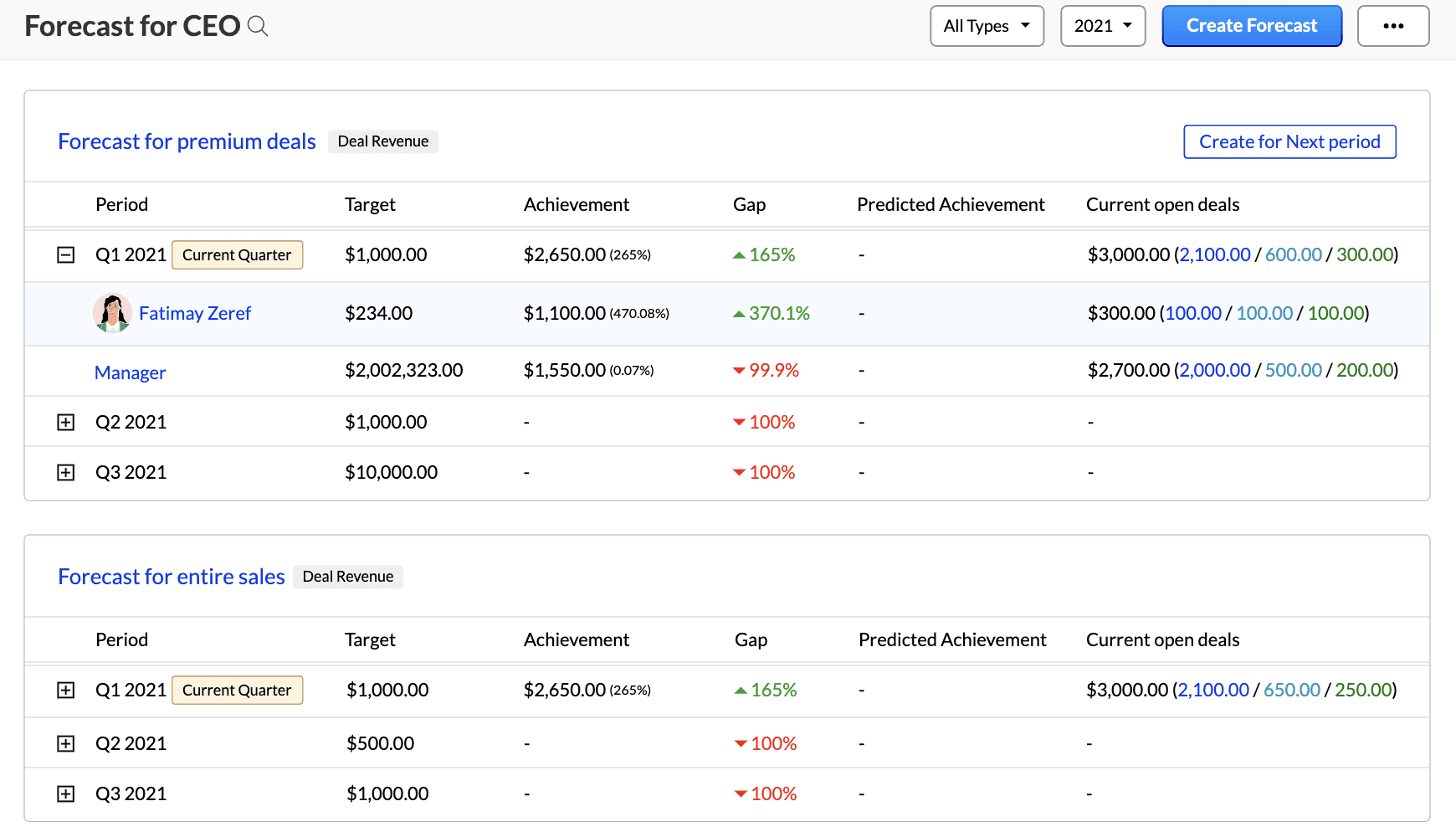



2. Outreach
Outreach is a sales email outreach and CRM platform that offers real-time pipeline analysis and buyer engagement signals to bring science to the art of forecasting, enabling revenue leaders to go from guessing the future to changing it with recommended actions.
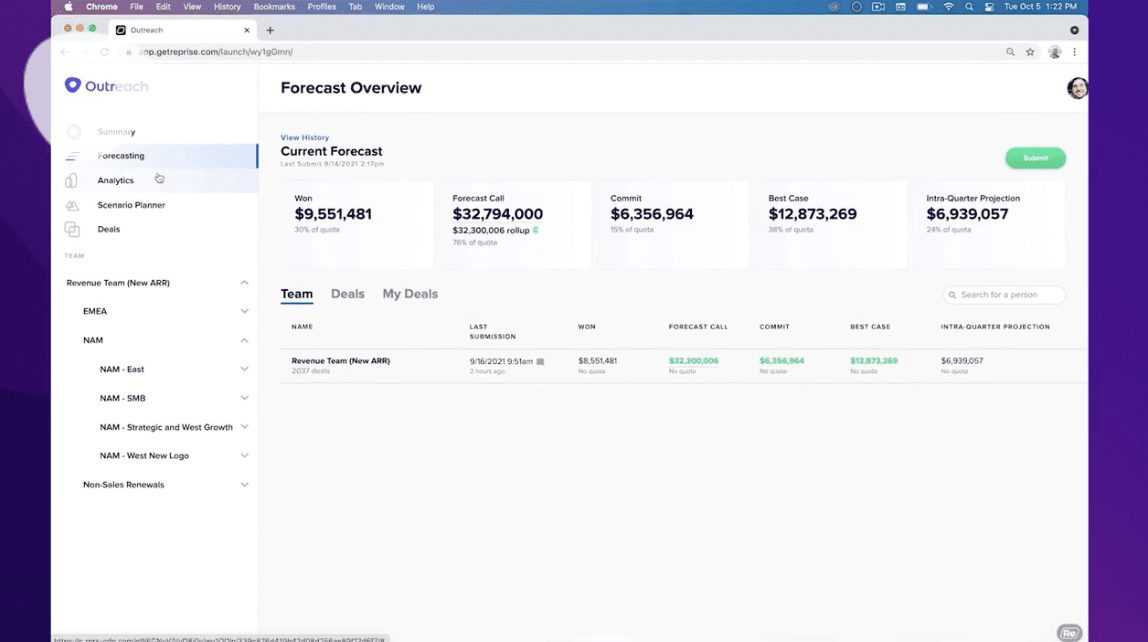

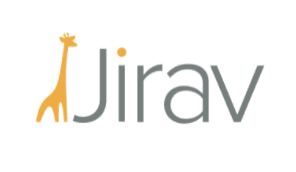

3. Jirav
Jirav is a platform that helps streamline financial planning and analysis in the cloud with all-in-one forecasting, budgeting, reporting, and dashboarding. With Jirav, sales teams can model the cash impact of key decisions, create business plans with ease, and use best-practice templates to customize reports.
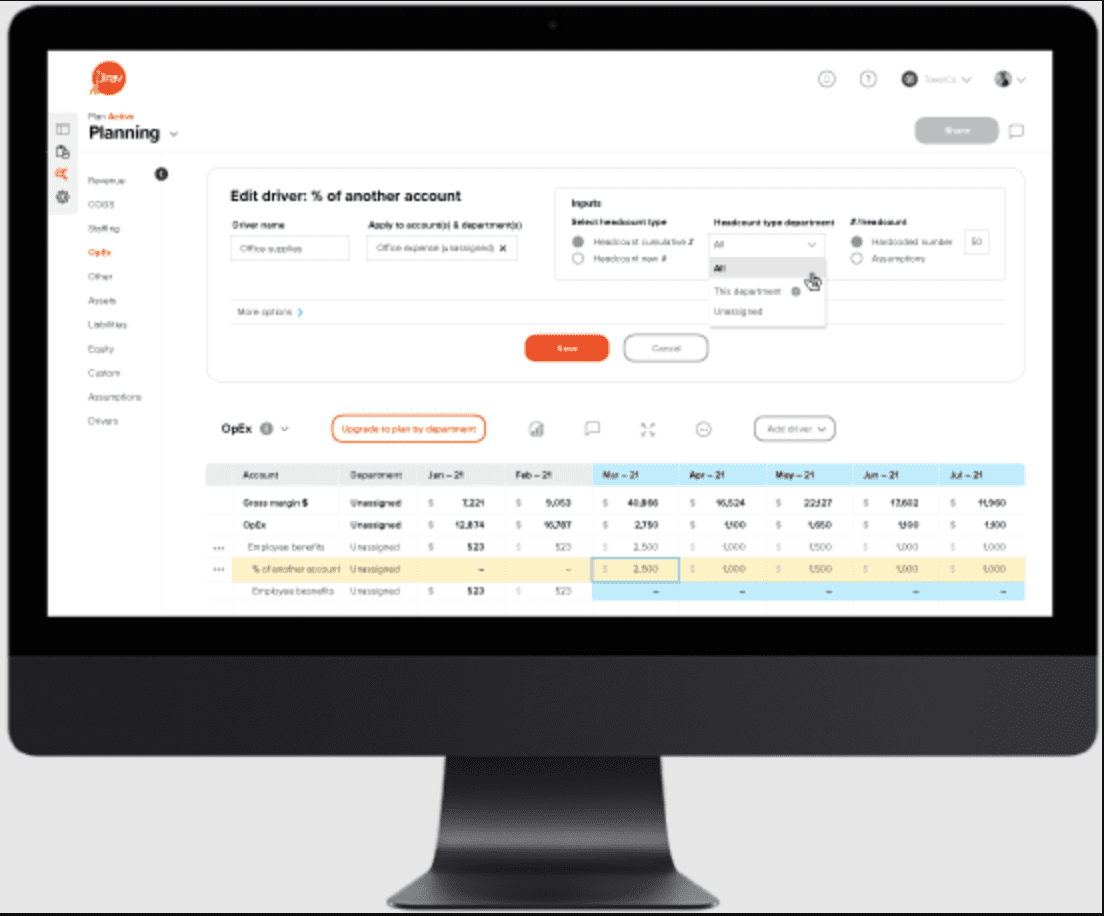



4. Whatfix
Whatfix provides contextual walkthroughs on how to navigate your sales forecast software and all of its elements to maximize user engagement. Sellers can utilize an in-app self-help wiki that allows them to search through their teams’ sales forecast documentation and resources whenever they need them.
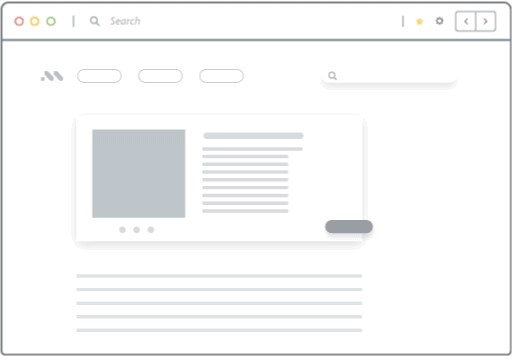

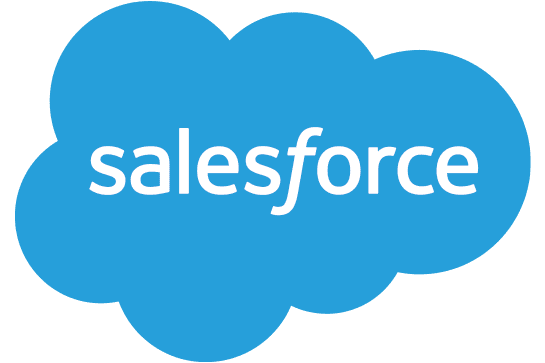

5. Salesforce
In Salesforce, a forecast is based on the gross roll-up of a set of opportunities. You can think of a forecast as a rollup of currency or quantity against a set of dimensions: owner, time, forecast categories, product family, and territory. You can also collaborate on forecasts with all the necessary people.
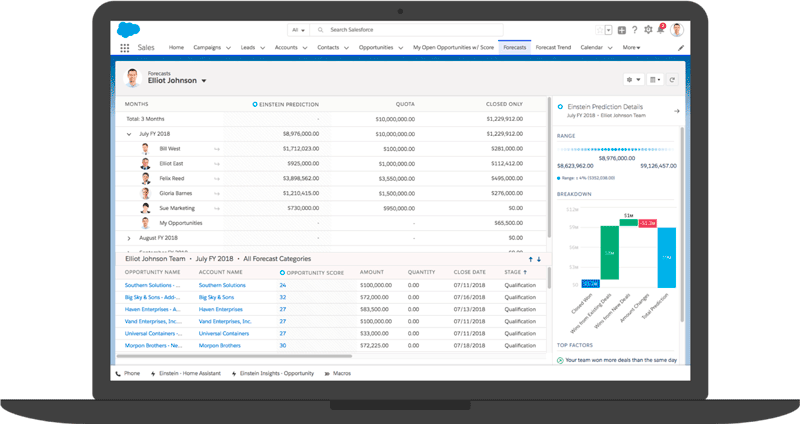



6. Hubspot
Hubspot offers a free sales forecasting template that is ideal for businesses that are just starting out. The all-encompassing forecasting template features:
- A spreadsheet for tracking which deals are guaranteed, likely, potentially, and unlikely to close this month
- A monthly revenue forecast that automatically updates with the information you entered in the first spreadsheet
- A yearly goal tracker so you can monitor your progress
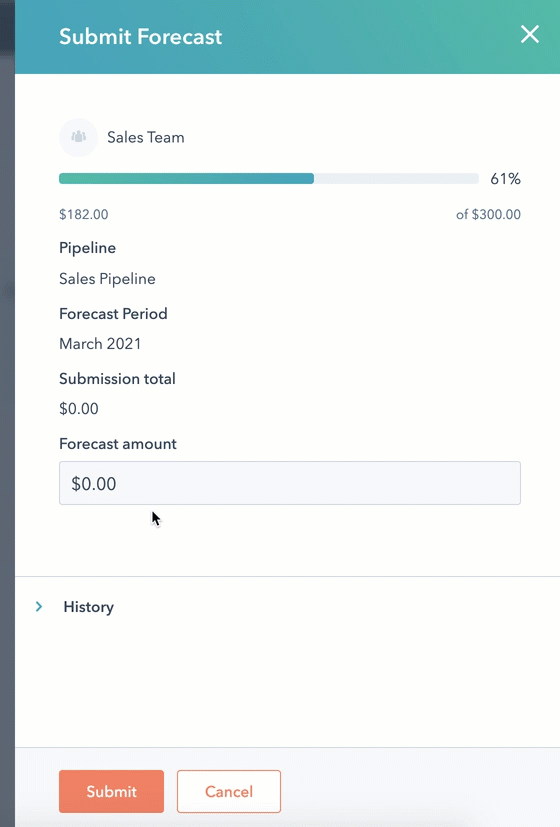



7. InsightSquared
With InsightSquared, you can automate and streamline forecast submission across your team, delivering AI-driven updates in real-time. The forecasting reports hold reps and teams accountable while visualizing their progress and improving their accuracy over time.
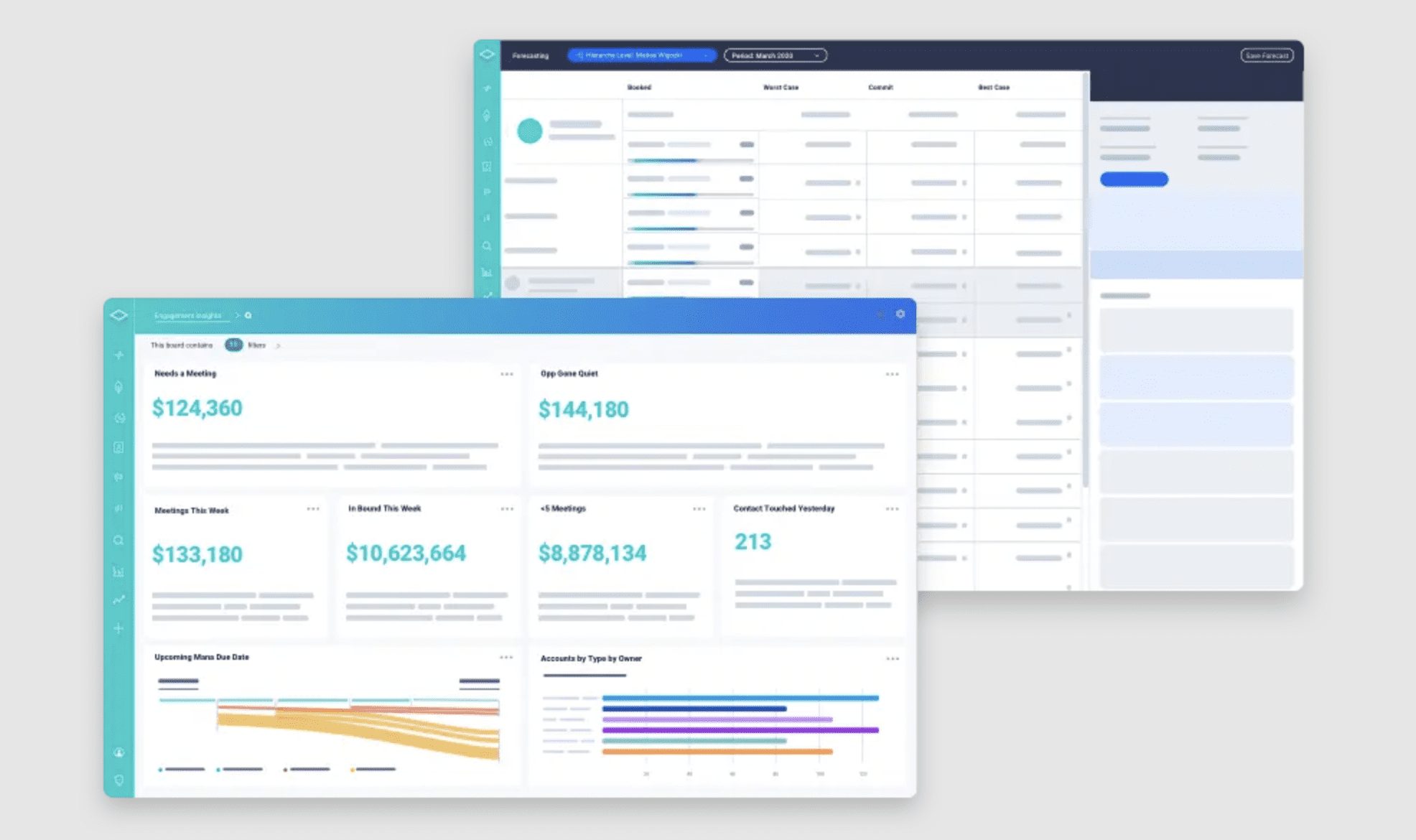



8. Pipedrive
Pipedrive’s helpful sales pipeline, insights, and reports prompt you to take action, remain organized, and stay in control. The revenue forecast reports predict turnover and growth to help address problems before they arise. The recurring revenue reports also show customer payments that come in multiple installments, so sellers can accurately generate revenue projections.
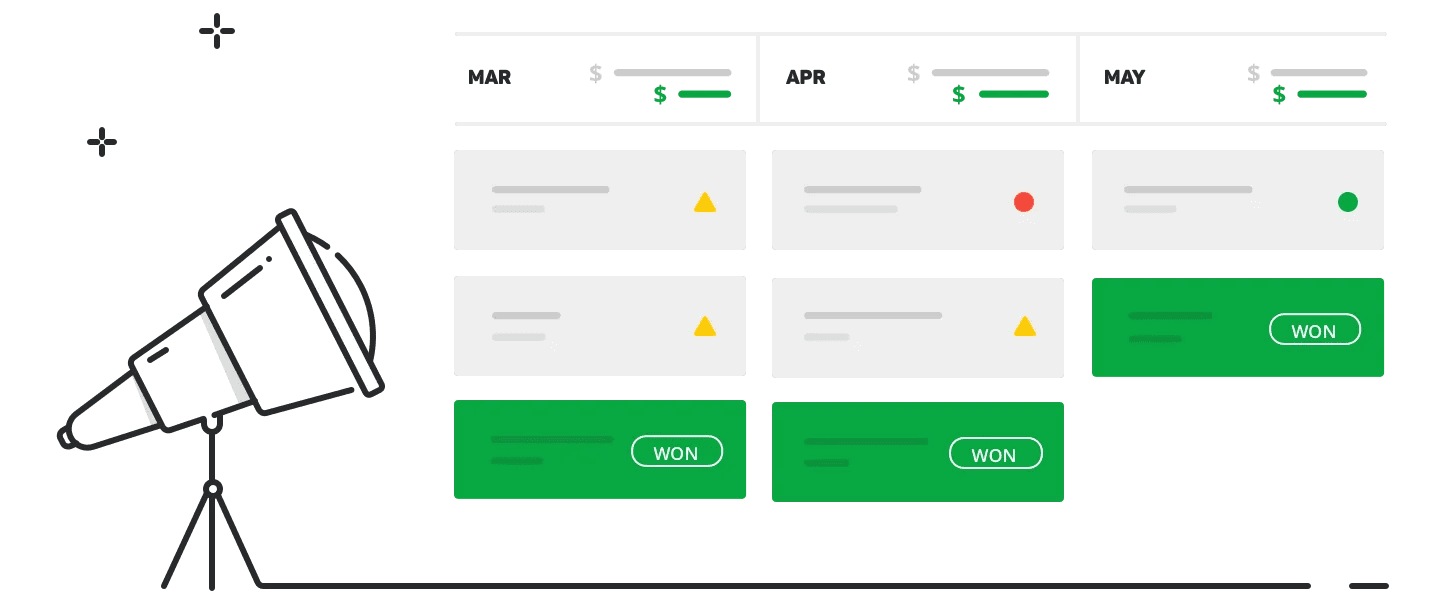

Accurate sales forecasting yields impactful results that align with market demand and consumer behavior, both today and in the future. With Whatfix, sales leaders can collect data on their sales forecast effectiveness and helpfulness in the flow of work – directly inside your sales forecasting software or other digital platforms.
Learn more about how Whatfix can support your sales forecasting efforts today.
Request a demo to see how Whatfix empowers organizations to improve end-user adoption and provide on-demand customer support
Thank you for subscribing!



